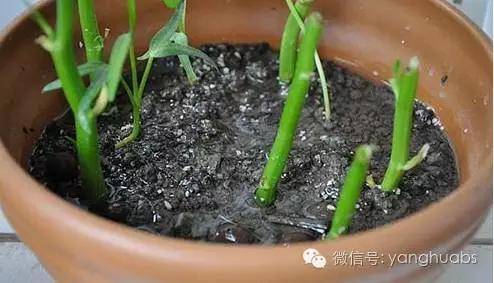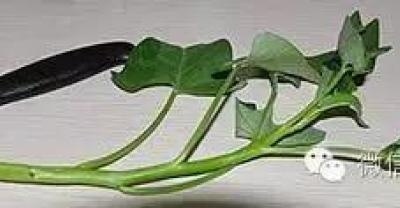Cutting vegetables on the balcony allows you to grow vegetables and have a bumper harvest!
Nowadays, various ways of growing vegetables on the balcony are highly respected and loved by the broad masses of people. The vegetables grown by themselves are green, pollution-free and healthy to eat. This is what people call relaxing vegetables. It is impossible for a group of people living in the city to open up wasteland and cultivate land, even if the green land of the community is dug up, I am afraid it will take a long time to fight a lawsuit with the property. However, students who are interested in growing vegetables do not have to pursue large venues. As long as they plant in flowerpots, they can eat all kinds of green vegetables they grow.
When it comes to cutting, the first thing we should think of is flowers. In fact, vegetables can also be cut, such as hollow cabbage, agaric, sweet potato, red back vegetable, heart-saving cabbage, purslane can be cut. The following is to introduce several kinds of potted cutting vegetables, which can be eaten and green your space. Let's get started!
Water spinach
Asparagus has a long harvest time and is a leafy vegetable growing in summer. it can break the structure of low-leaf vegetables and multi-pod vegetables in northern summer and is not limited by high temperature and rainstorm. As a result, the north began to introduce and cultivate, and achieved success. It can clear away heat and detoxify.

1. First of all, choose the hollow vegetables you just bought and keep the branches fresh.

2. Then take off the leaves and tips.

3. It should be noted that when pinching the leaves, it is broken, not torn, so a little bit of petiole is left, and there are buds between the petiole and the main stem, so it is easy to sprout.

4. At the connection point at the bottom, cut off and cut off the hollow part at the bottom of the spinach pole. Isn't there a partition in every section like bamboo? Just cut to the point where you can see the partition, and then insert it into the soil so that it won't rot.

5. The picture above is the position where the cuttings are cut off, so as to avoid the rot at the bottom of the cuttings.

6. Then the cuttings are carried out, and the cuttings are inserted into the soil at a depth of 2mm and 3cm, requiring more moisture, so it is easier to bear fruit. Hollow vegetables can be raised by water in the south, so they are not afraid of water. Usually 7MUR can sprout in 10 days.
7. This is the sprouted asparagus, which can be eaten delicious and fresh after a period of time. Do you think it's great?
Sweet potato
Sweet potato, also known as sweet potato, is fed with fat fleshy roots, sweet and juicy when tender, and can be used as fruit, food or cooking. Sweet potato leaves are rich in fiber, vitamin A, vitamin B, vitamin C, iron, calcium and so on.
1. If you cut a vine about ten centimeters from the sweet potato vine, you need to choose a seedling with moderate stem thickness.
2. The flowerpot should be larger than 30 cm in diameter, because it grows very fast in the later stage and needs enough nutrition. Sweet potato has strong adaptability to soil, so it is suitable for sandy soil with deep, loose and rich organic matter, using ordinary garden soil, or rotten leaf soil, plus some sand to increase air permeability.
3. Cut the cut branches well, pour enough water, and put them in a cool shade for about three days. Generally, they begin to take root at 7: 10. (removing the following two or three leaves will effectively reduce water volatilization and make it easier to survive and root.)
4. apply more organic fertilizer during the growing period, water more in summer, and properly control water in early autumn. Sweet potato has strong adaptability to soil and is suitable for sandy soil which is deep, loose and rich in organic matter.
5. in the season of harvesting sweet potatoes in autumn, dig up the soil and take a look, the treasure has come out.
Auricularia auricula
Auricularia auricula vegetable, also known as sunflower, is less cultivated and has been listed as a rare vegetable. Sunflower feeds on seedlings, tender stems and shoots of tender leaves. The taste is fresh, tender and smooth. Can be fried food, hot food, cold salad. Its taste is fragrant, crisp and refreshing, like fungus, with a unique flavor. Note: the spleen is cold and cannot be eaten. Pregnant women should not take it.
1. Buy fresh agaric vegetables from the vegetable market, take the stronger branches in the lower part, about 10 centimeters, cut off the excess leaves, and some leaves are too large to cut off half.
2. Cut an oblique opening in the lower branch, where there should be sprouts first, so that it is easier to sprout new roots.
3. All right, take care of the spare branches used for cutting.
4. The substrate of cutting can be coarse sand, and it is better to choose loose peat + perlite. If the soil should be kept moist and sprayed with water regularly, new roots will grow in about 10%.
5. It won't be long before you can eat fresh, delicious and absolutely non-polluting fungus dishes.
Red back vegetable
Red back vegetables, also known as Guanyin vegetables, Angelica vegetables, red Phoenix vegetables, Guanyin amaranth, red back vegetables, purple back vegetables. Compositae. I like to grow up in dark and damp places. The bottom of the leaf is green and the back is purplish red, which is called "red back vegetable". It helps to lower blood lipids, help digestion and dissolve intestinal qi. It is a wild vegetable that can be tasted all year round.
1. Select the sturdy branches about 15 to 20 centimeters long for cutting, and remove the redundant leaves (leaving only the upper 2 or 3 tender leaves) to avoid water loss. Branches had better have lateral buds to accelerate their growth. The lower part is cut into a bevel, and then it can be cut.
2. The loose, moist and fertile sandy loam is the best, and the soil is obliquely compacted and watered to shade and moisturize. Remove the shade after 7 days.
3. Plants grow thin roots about 10-15 days after cutting. at this time, we should avoid fat damage to fine roots, and then start topdressing after growing more roots (about 14-20 days), and then top fertilizer for each harvest to replenish nutrients.
Finally, put a red back vegetable leaf insertion effect picture, I heard that the survival rate is also very high!
Guobang (WeChat account: shuiguobangv)
Introduce a variety of fruit, flowers and other pot technology and a variety of household ideas, we advocate green, ecological, environmental protection, to be an urban farmer!
- Prev

Anti-cancer and anti-cancer vegetables: which vegetable is the best to prevent and fight cancer? What are the top ten anti-cancer vegetables
1. Strong kidney plant: okra When it comes to the efficacy of vegetables, the most famous is okra. It has yellow flowers and fruit that looks a bit like chili.
- Next

It is very important for farmers to grow vegetables and apply fertilizer.
In the past two days, an expert in the village gave a lecture. Having a degree and certificate sounds very reliable. Everyone got together to listen to him talk about how vegetables can be high-yielding and how to apply fertilizer.
Related
- Where is it suitable to grow horseradish in China? it is expected to see the middle altitude horseradish in Alishan.
- How to prevent tomato virus disease reasonably? (Control methods included)
- Many people like to plant towel gourd on the balcony. What are the main points of this method and management?
- What crops can chili peppers be mixed with?
- Fertilization techniques and matters needing attention in Tomato
- What are the grafting techniques for peach seedlings in spring?
- Harm and control methods of root swelling disease of Chinese cabbage
- What are the pests of sweet potatoes? How to prevent and cure it?
- Symptoms, causes and Control methods of navel Rot in Tomato
- The cause of "Cucumber rotten bibcock" in Farmers' planting Cucumber and its Control Plan

